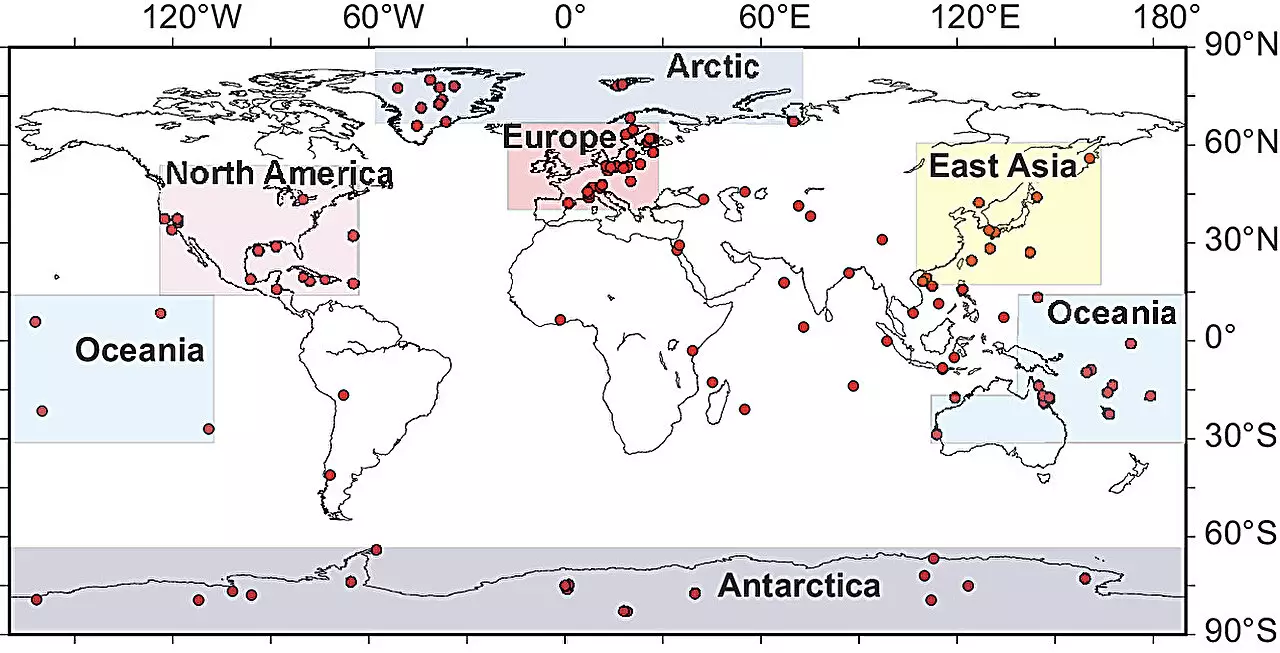The term “Anthropocene” has emerged in recent scientific discourse as a descriptor for the current geological epoch. It underscores the profound and often detrimental impact human activities have exerted on the Earth. This concept gained traction in 2002 when Nobel Prize-winning atmospheric chemist Paul Crutzen posited that the Holocene epoch—characterized by a relatively stable climate and conditions conducive to human civilization—has now transitioned into a new age shaped by anthropogenic influences. As we grapple with the implications of a changing climate, biodiversity loss, and pollution, the quest to define when exactly this epoch commenced becomes increasingly pertinent.
Recent research conducted by a consortium of scientists, including teams from distinguished institutions such as the Center for Marine Environmental Studies and the University of Tokyo, has narrowed down potential markers for the onset of the Anthropocene. The study, published in the Proceedings of the National Academy of Sciences, meticulously analyzes three pivotal timeframes as candidates for the epoch’s beginning: the late 1800s, the early 1900s, and the 1950s.
The late 19th century, marked by the advent of the Industrial Revolution, presents itself as an early contender. This period saw the introduction of coal as a primary energy source, which significantly altered atmospheric compositions through increased carbon emissions. Furthermore, the widespread utilization of lead in various industries left pervasive traces in geological records, signaling a substantial shift in human environmental interaction.
The early 20th century serves as the second candidate, characterized by drastic ecological shifts. This period experienced an uptick in the deposition of black carbon, alongside notable changes in pollen distribution and stable isotope patterns. Such alterations are indicative of significant anthropogenic influences altering ecosystems on a global scale.
The Compelling Case for the 1950s
However, the research team has ultimately asserted that the 1950s represent the most compelling case for the formal recognition of the Anthropocene. This decade encapsulated transformative changes that reshaped not merely regional landscapes but had global ramifications. It witnessed the onset of the nuclear age—evidenced by radioactive isotopes dispersed globally following nuclear testing. Such indicators haunt the geological layers, serving as stark reminders of humanity’s far-reaching impact.
Moreover, the mid-20th century marked a dramatic spike in the production and release of synthetic organic pollutants, plastic materials, and microplastics. These pollutants have profoundly altered ecosystems and wrought havoc on marine environments. The ubiquity of microplastics is alarming, as they infiltrate water bodies and are now discovered in organisms across the food chain.
The 1950s also corresponded with the early indications of climate change impacts. Global warming discussions began gaining momentum as evidence of rising temperatures and shifting weather patterns became irrefutable. The convergence of such multifaceted changes signals a distinct shift from previous epochs and emphasizes our unique role in this new geological narrative.
The implications of designating the 1950s as the start of the Anthropocene are profound. If accepted, this assertion serves not only as a historical benchmark but also as a clarion call for a collective responsibility towards planetary stewardship. The considerable alterations to Earth’s systems—often described as irreversible within human timescales—stress the urgent need for sustainable practices to mitigate further degradation.
By recognizing the Anthropocene, we are encouraged to confront the reality of the challenges that lie ahead, including climate change, resource depletion, and habitat destruction. The legacy left by the previous century is evident in accelerating biodiversity loss and escalating environmental crises.
As the scientific community rallies around the concept of the Anthropocene, the determination of its starting point is more than an academic exercise; it serves as an urgent call to acknowledge the influence that our species wields. The conclusion drawn by researchers about the 1950s highlights critical changes that may take millennia to revert if humans were to vanish from the narrative. Recognizing this epoch challenges us to rethink our relationship with the Earth and to forge paths towards sustainable futures that prioritize cohabitation with the natural world. In doing so, we can work collectively to steer the planet away from the precipice of collapse and embrace a new era defined by resilience and restoration.


Leave a Reply